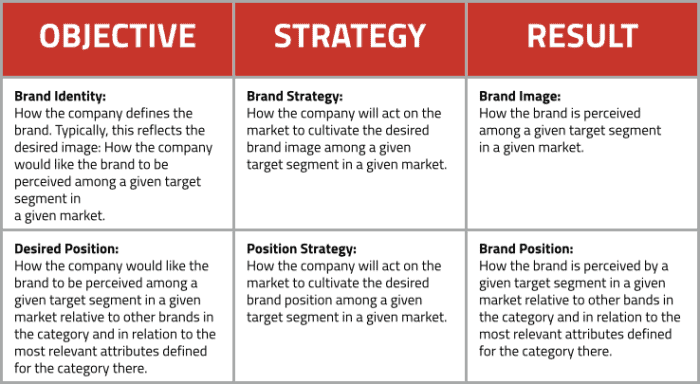What is positioning strategy?
A brand’s position refers to the way that customers and prospects perceive it relative to the other brands in the same category.
A company’s positioning strategy is a plan that details what the company will do in order to cultivate the desired perception in the market so their brand is compared favorably.
Companies may, and often do, try to achieve the same brand position in the minds of consumers globally. However, in order to cultivate that same position, the company will need to develop a different positioning strategy for each country. That’s because, in each market, the brand will be compared in a different context.
Even the word “positioning” begs the question: In relation to what? That’s because positioning is a relative thing. It is created by consumers in direct relationship to contextual factors such as:
- target segmentation;
- competition;
- economic conditions;
- cultural norms and purchase behavior;
- prospect problems, needs, options, value equation (needs vs. resources), beliefs, and perceptions.
How to create marketing positioning strategy?
If you have experienced strong domestic growth you may be tempted to simply replicate your positioning strategies in other markets and hope for the same outcome. After all, why reinvent the wheel? The short answer is that the reason your current wheel works so well is because it is fine-tuned to the nuances of your market. As such, it is pretty much guaranteed not to be fine-tuned to the needs of new markets you are entering. The reasons for this include, but aren’t limited to, the differences listed above.
This has two main implications for marketers. First, these variables change over time so brands should have a process in place to track and adapt to those changes swiftly. Second, it explains why effective positioning strategies don’t lend themselves easily to globalization. If you are managing a global brand, it is unlikely that the factors affecting your position will be the same in all markets you serve. So you’ll need to localize your global positioning strategy.

If we want to cultivate a unified global position for our brands we’ll need to include a local positioning strategy as part of our marketing strategy. That is, asking ourselves the following question: Given this country’s unique market environment, how do we want consumers to compare our brand to local competitors and what can we do to encourage that perception?
This approach may lead to very different tactics in each market to achieve the same position in consumers’ minds. Having a strong international brand image can help smooth over differences in positioning and other local market-specific activity.
The brand’s image is the anchor. It should be the same in every market allowing you to fine-tune your marketing mix to local conditions along with your position without appearing schizophrenic. Just make sure that the local position supports your identity and never contradicts it. If you can’t make it so, consider this as an indication that a second brand may be in order.
If you are trying to position a global brand, remember that a brand’s position can be international but its positioning strategy must be multi-national (i.e., market-specific). So you are not really positioning your brand globally or even regionally (i.e., Europe). You are actually positioning it one market at a time based on the factors above. This is often a sticking point with brand managers since they are trained in the doctrine of absolute consistency for brands and many lack international experience. But when dealing with multiple countries, it’s important to remember that achieving the same brand position and image can require very different strategies and tactics in each market.
Learn more about brand strategist.




